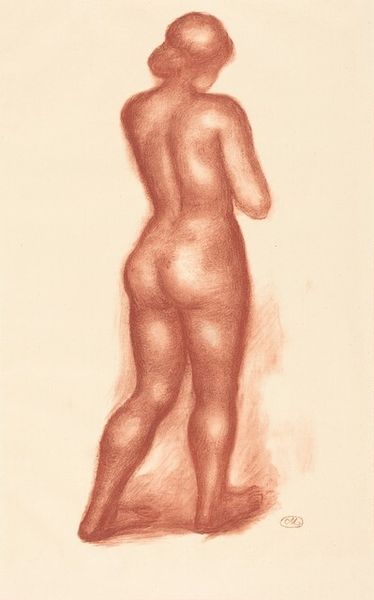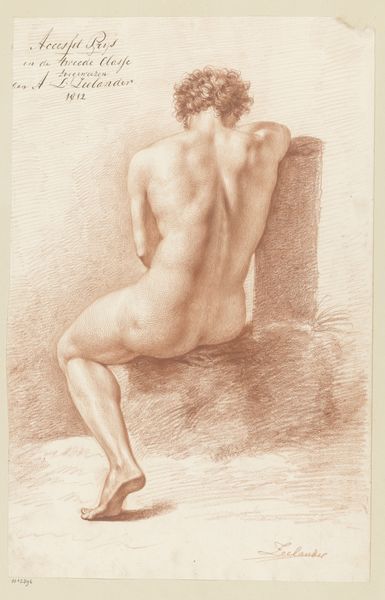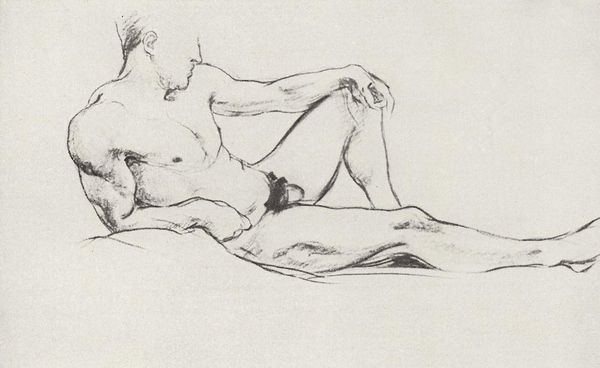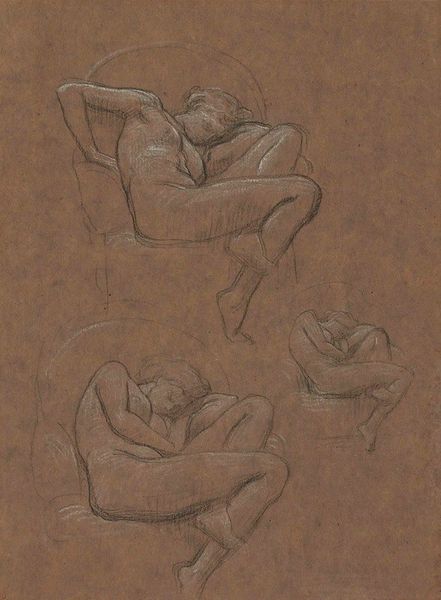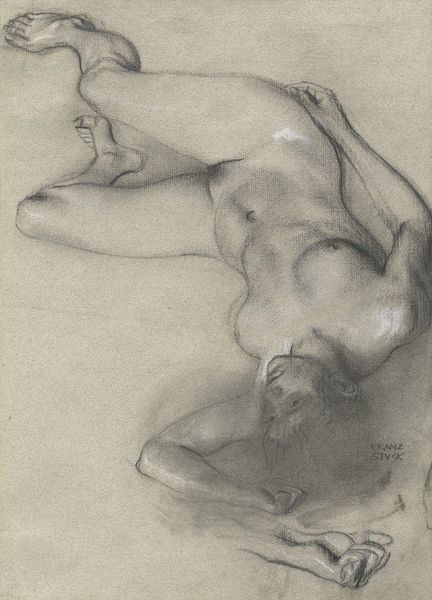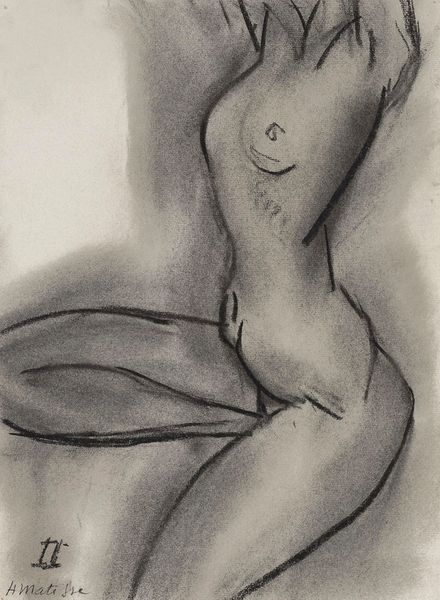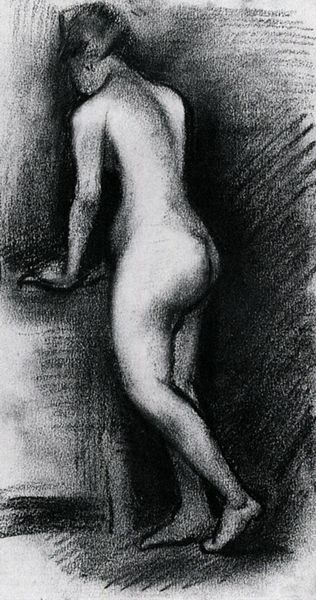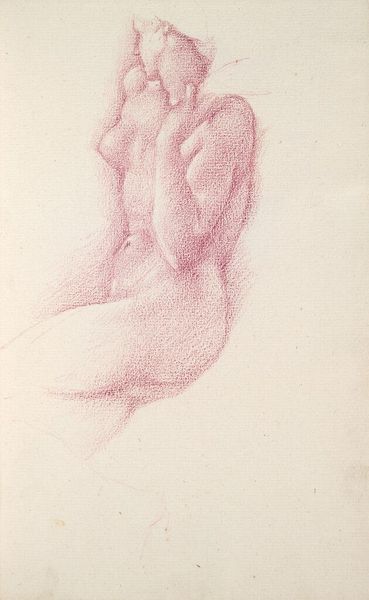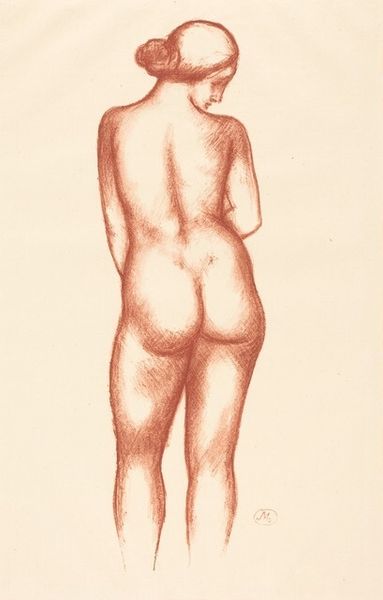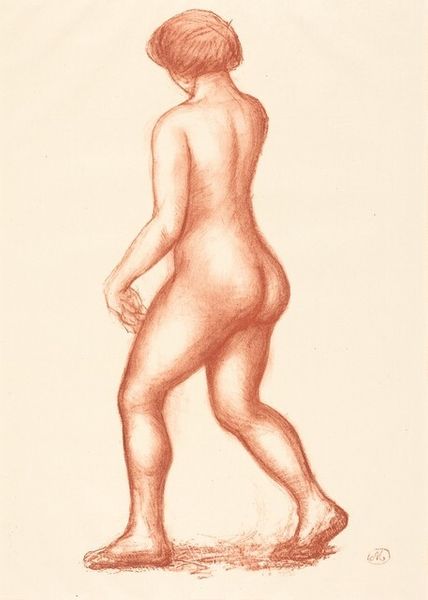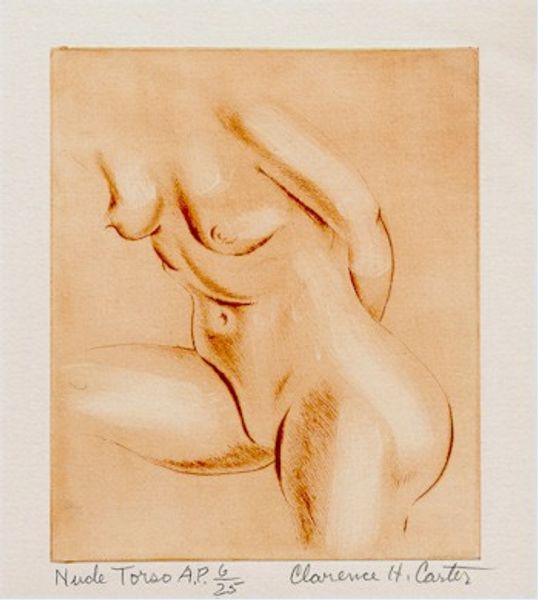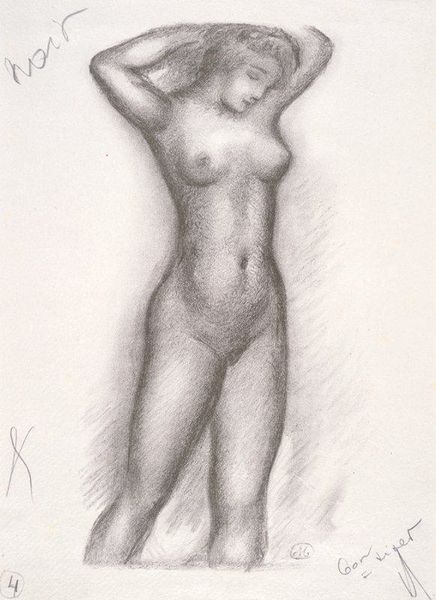
drawing, pencil
#
portrait
#
drawing
#
impressionism
#
figuration
#
pencil drawing
#
pencil
#
portrait drawing
#
nude
#
portrait art
Copyright: Public Domain: Artvee
Editor: Here we have Pierre-Auguste Renoir's "Femme assise," a pencil drawing from around 1885 to 1887. I find it incredibly intimate; there’s a raw, almost vulnerable quality to the figure. How do you read this piece, given its place in Renoir's oeuvre and the wider artistic landscape of the time? Curator: It’s interesting you mention the intimacy. While Renoir is often celebrated for his sensual and idyllic portrayals, this drawing offers a glimpse into the power dynamics inherent in representing the female nude, a very public performance laden with centuries of art historical precedent. How does its probable creation as a study change our perception of its ‘intimacy,’ especially when understanding that this drawing would have likely taken place with Renoir, the model, and perhaps other assistants present? Editor: That's a good point. Knowing that changes how I think about the 'intimacy'; it feels more staged now. Could you elaborate on that relationship between the artist, the model, and the audience, and what was the institutional context surrounding its display? Curator: The 19th-century art world was heavily influenced by the Salon system and academic traditions. Renoir, though an Impressionist, had to navigate those structures for recognition. Nudes were accepted within certain parameters—mythological or allegorical pretexts largely sanitized what would otherwise be considered extremely private subjects. Does this drawing challenge or perpetuate those norms, do you think, given it doesn’t provide those established acceptable excuses to show this woman’s nude body? Editor: I see what you mean. It does feel a bit subversive in that context. Maybe its quietness is actually a statement? Curator: Precisely! The drawing allows us to analyze the socio-political environment that shaped art production and how Renoir, knowingly or not, participated in those systems. What have you observed differently about the way a drawing of this kind is approached given all we've discussed? Editor: Thinking about the gaze – who gets to look and why – definitely casts the drawing in a new light. I'm seeing a tension between its apparent simplicity and the complex social history it embodies. Curator: Exactly. The artwork’s historical context helps it expand from a simple study into an insightful examination of the human form in art, and Renoir’s artistic position in history.
Comments
No comments
Be the first to comment and join the conversation on the ultimate creative platform.
